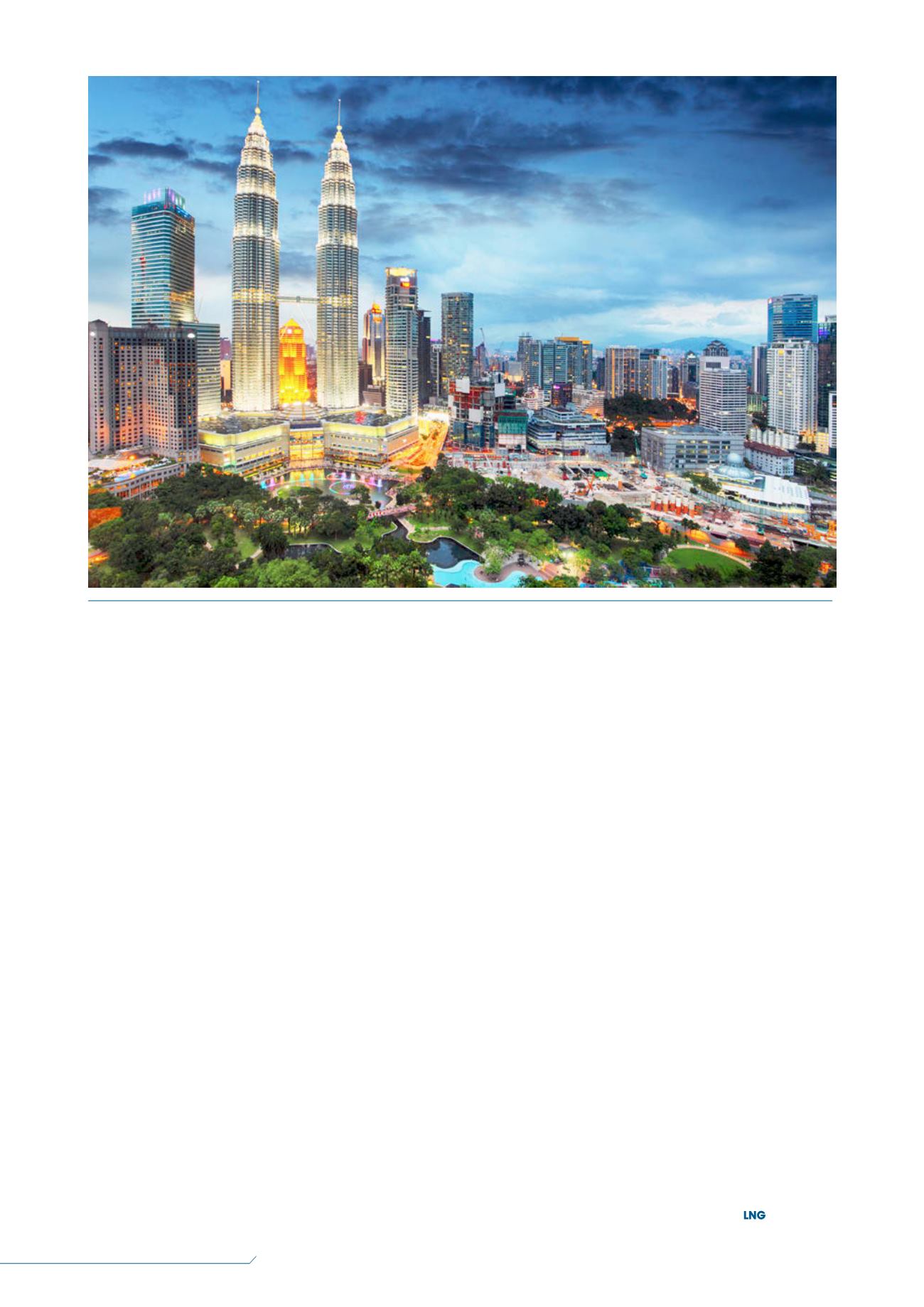
16
LNG
INDUSTRY
SEPTEMBER
2016
representing 57% of total expenditure in Asia over
2017 – 2021. This includes additional carriers expected to
be added to the fleet over the forecast period to satisfy
increased export capacity – particularly in North America.
DW expects all newbuild carriers yet to be ordered to be
constructed in Asian shipyards over the forecast period.
Over the 2012 – 2016 period, Asia accounted for 92% of
global expenditure on regasification facilities. This was
largely driven by South Korea and Japan, with imports
increasing following the nuclear shutdown in the aftermath
of the Fukushima incident.
Asia’s share of global expenditure on regasification
facilities is expected to decline significantly to 66% over the
2017 – 2021 period. Regions such as Africa, Latin America,
and Western Europe are expected to see a significant
increase in spending. Asia’s total expenditure is forecast to
decline marginally by 2% when compared with the
2012 – 2016 period. This is partly due to weaker demand for
LNG in Japan, following the re-start of its nuclear power
stations. Notably, Japan’s Ministry of Finance has reported
that LNG imports declined by 6.2% during the fiscal year
ending in March 2016.
Expenditure on import projects over the forecast period
is expected to be driven by China and India, due to
increasing global pressure to reduce emissions. Onshore
regasification facilities currently under construction in
China include ENN Energy’s 3 million tpy Zhoushan LNG
facility, due to commence operations in 2018. In India,
Petronet LNG is planning to expand the capacity of its
Dahej regasification terminal to 15 million tpy by the end of
2016. Indonesia is also expected to contribute to
Figure 3.
Liquefaction expenditure in Asia will be focused on projects in Indonesia and Malaysia.
expenditure on import projects over the forecast
period, with several projects currently at the concept
stage.
Liquefaction expenditure is expected to account for
13% of the region’s total expenditure over the
2017 – 2021 period, compared with 7% over
2012 – 2016. Expenditure will be focused on projects in
Indonesia and Malaysia, including the second, third
and fourth trains for the Sengkang facility in Indonesia,
and the ninth train for the Malaysia LNG Sdn Bhd
(MLNG) facility in Malaysia. The third train for BP’s
Tangguh facility in Indonesia is also expected to
become operational in 2020. In recent years, the
region has also diversified towards the use of floating
liquefaction facilities as a cost-effective, short-term
solution for the processing of natural gas.
Conclusion
In the near-term, a stormy ride is expected for the
LNG industry as low prices limit investment in capital
intensive liquefaction projects. However, the need to
meet rising domestic demand remains a compelling
driver for the continued investment in these capital
intensive projects. The long-term potential of the
LNG industry is evident. Natural gas is expected to
play an increasingly important role in meeting the
world’s energy demand, with countries seeking to
diversify their energy supply. Furthermore, delays in
committing to new nuclear capacity and the limitations
of renewable technology in baseload application will
be key factors for increased LNG demand.


